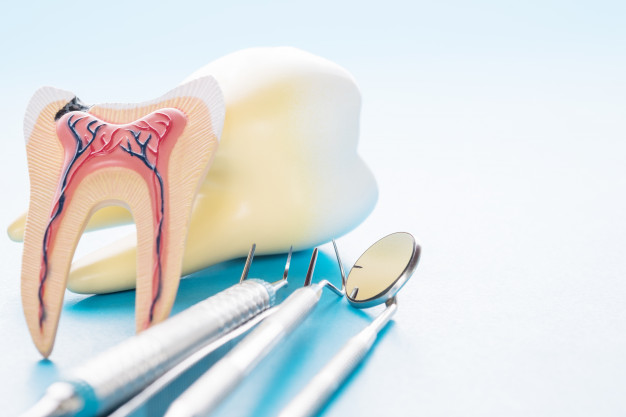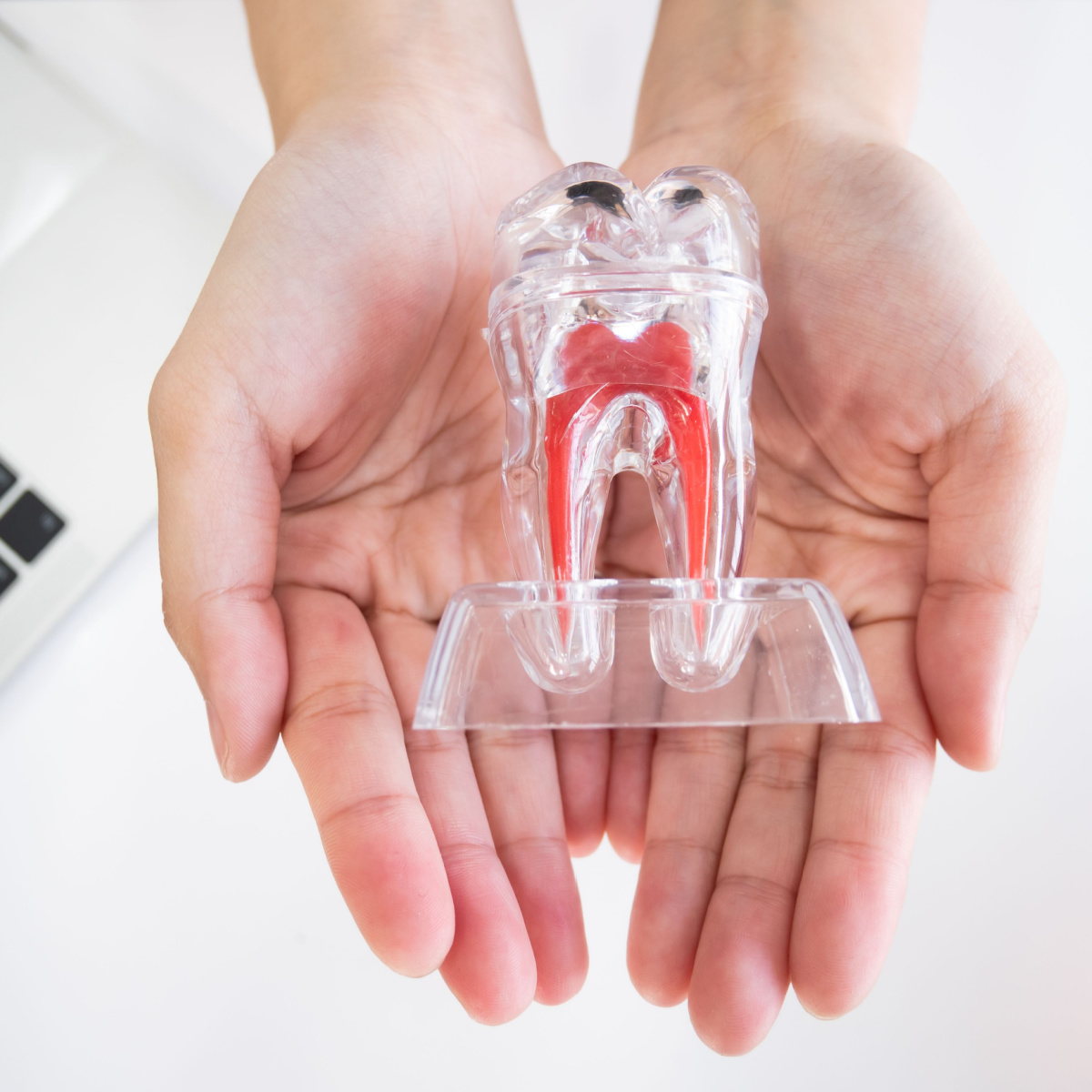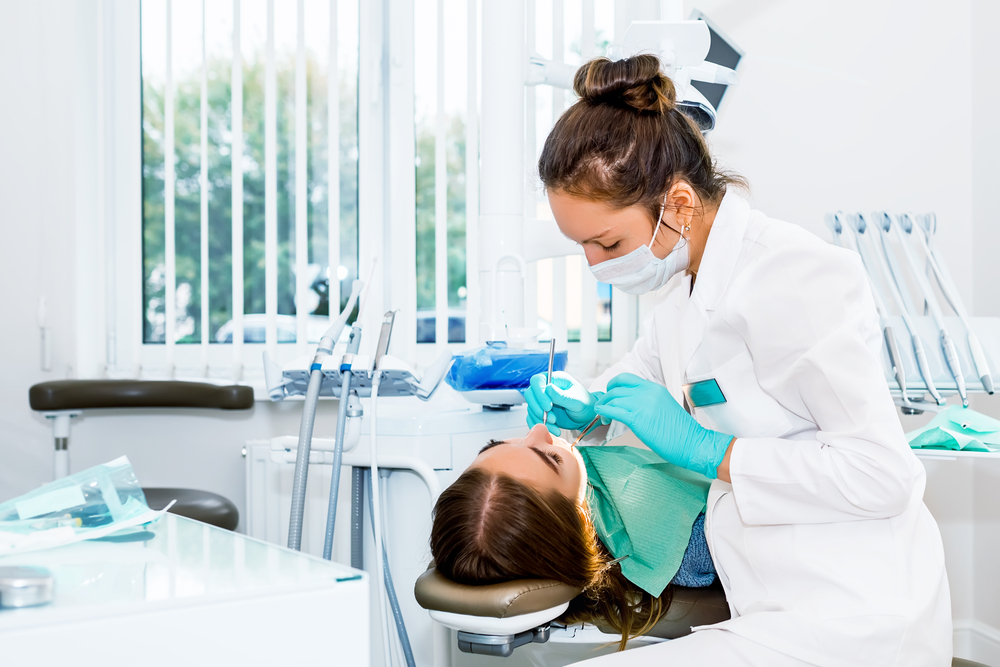1812 E. Broadway St.
Pearland, TX 77581
Root canal therapy is a crucial dental procedure that can save a tooth that has become infected or severely damaged. While many patients feel anxious about root canal treatment due to its reputation, it’s a safe and effective way to restore oral health and preserve your natural teeth. At Pearland Dental Group, our experienced Pearland dentists, Dr. Rushi Dave and Dr. Milli Shah, are committed to providing top-notch root canal treatments in a comfortable and caring environment.
In this comprehensive guide, our Pearland dentists explain the essentials of root canal treatment to help patients prepare for the procedure and feel more at ease. If you’re experiencing tooth pain or suspect you might need a root canal, don’t hesitate to contact our Brazoria County dental practice today by calling (281)993-9900 to schedule a consultation.
Root canal therapy is a sophisticated dental procedure designed to remove infected or damaged pulp from within a tooth. The pulp, which contains nerves, blood vessels, and connective tissue, can become compromised due to deep decay, repeated dental procedures, or trauma.
During the procedure, our Pearland dentists carefully clean and shape the root canals before filling and sealing them to prevent future bacterial invasion. This process not only saves the tooth from extraction but also alleviates pain and prevents the spread of infection.
To better understand root canal therapy, it’s essential to know the basic structure of a tooth:
Root canal therapy (either surgical or non-surgical root canal treatment) may be recommended by our Pearland dentists in several situations, including:
Root canal therapy is often the best solution to address these issues and prevent further damage to the tooth and surrounding tissues. In cases where a root canal fails to effectively solve the problem, we also offer root canal retreatment.
Our experienced Pearland dentists at Pearland Dental Group are skilled in diagnosing and treating these conditions effectively. If they believe that a root canal alternative might be a better option for your case, they’ll be sure to let you know.
If you’re experiencing any of the following symptoms, you may have a dental infection that requires root canal therapy:
If you’re experiencing any of these symptoms, it’s crucial to schedule an appointment with Dr. Dave or Dr. Shah at Pearland Dental Group as soon as possible. Early intervention can often lead to better outcomes and may prevent the need for more expensive and extensive treatments. If you’re worried about the cost of root canal treatment, we’ll help you maximize insurance coverage and explore financing options.
There are numerous advantages to undergoing root canal treatment at our Brazoria County dental practice:
Here’s what you can expect during a root canal treatment at our Pearland, TX office:
Yes, root canal therapy is a safe and well-established dental procedure. Our Pearland dentists use advanced techniques and sterile instruments to ensure the highest level of safety during the treatment.
The procedure effectively removes the source of tooth infection and or inflammation, promoting healing and preventing further complications. With proper care and follow-up, root canal therapy has a high success rate and can help preserve your natural tooth for many years.
While root canal therapy can be performed on most teeth, there are some exceptions. Teeth with severe decay, extensive structural damage, or vertical fractures may not be suitable candidates for root canal treatment.
In such cases, our Pearland dentists may recommend alternative treatments, such as extraction followed by a dental implant or bridge. During your consultation at Pearland Dental Group, we’ll thoroughly evaluate your tooth and discuss the most appropriate treatment options for your specific situation.
The duration of a root canal procedure can vary depending on the complexity of the case and the tooth being treated. Generally, a root canal can be completed in one or two appointments, with each session lasting between 60 to 90 minutes. More complex cases, such as those involving molars or teeth with multiple canals, may require additional time or visits.
After the root canal treatment is complete, you may need to return for a follow-up appointment to have a permanent crown or restoration placed, ensuring the long-term protection and functionality of your treated tooth.
Root canal therapy may seem daunting, but with the skill of our Pearland dentists at Pearland Dental Group, it can be a comfortable and effective way to address various dental problems. By understanding the root canal procedure and its benefits, you can make informed decisions about your dental health and receive the care you need to maintain a healthy, pain-free smile.
Call our Pearland dental office at (281)-993-9900 to schedule a consultation today. We proudly serve patients from Pearland and surrounding areas, including League City, Sugar Land, and Houston, TX. Let our experienced team at Pearland Dental Group help you achieve optimal oral health and a beautiful smile.




Our clinic offers all kinds of services and constantly study new
technology to add new custom services to the list
Phone: (281)993-9900
Address: 1812 E. Broadway St. Pearland, TX 77581
Copyright © 2021 Pearland Dental Group | Managed by Now Media Group